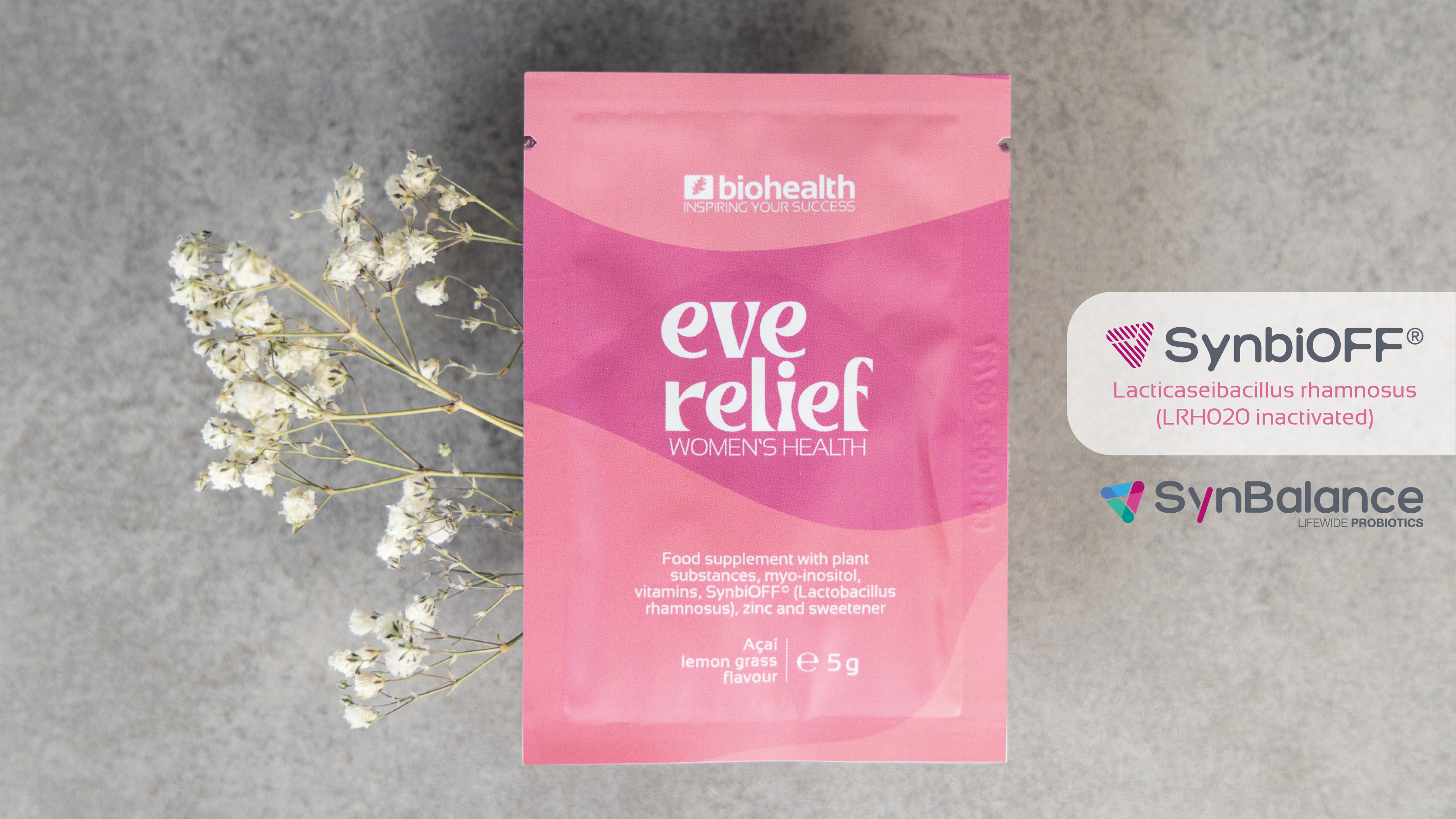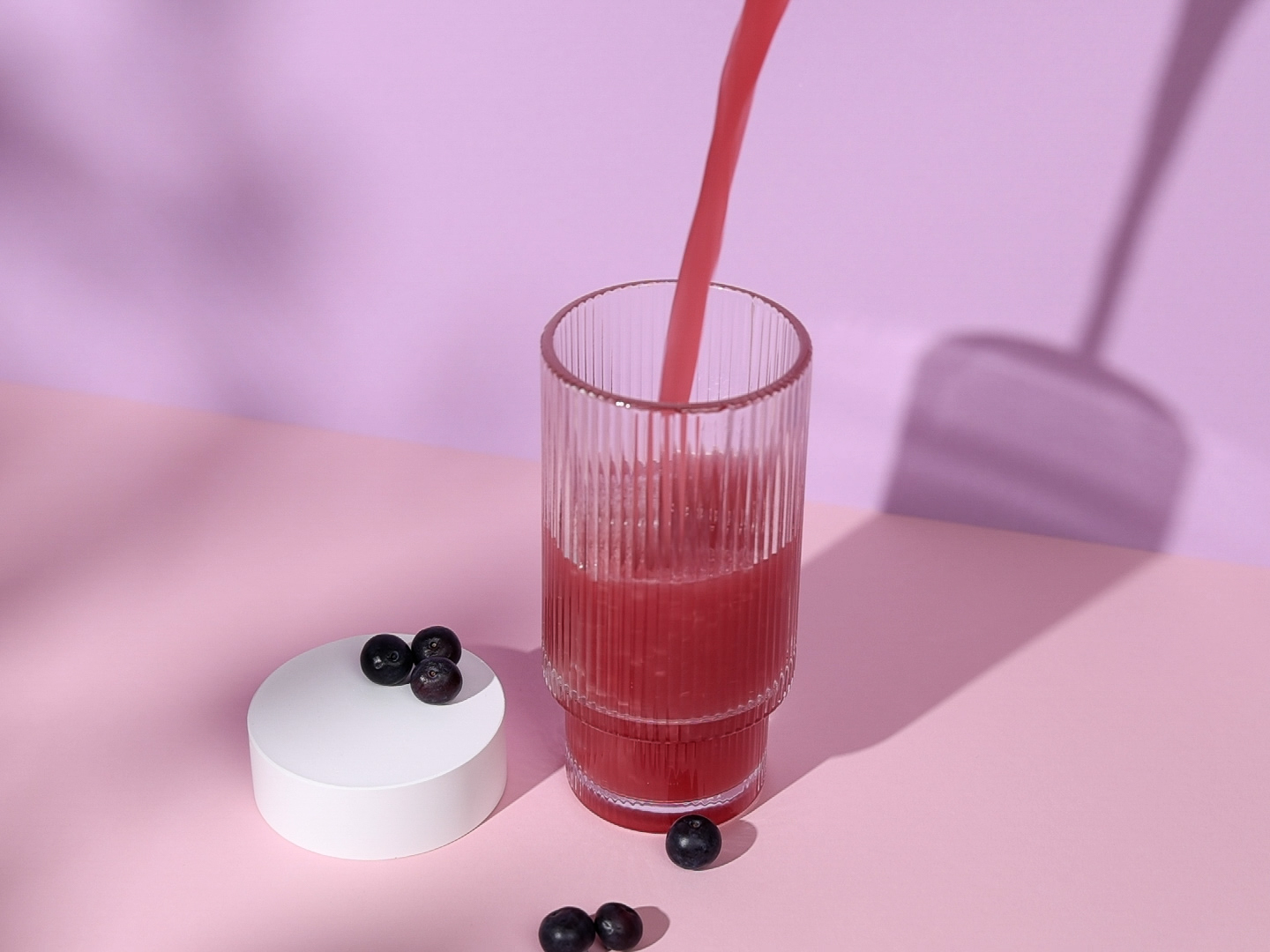Newsletter | Ingredients | Trends |

Professionals around
Postbiotics
Interview with Michele Dello Russo from SynBalance
As a manufacturer of high-quality food supplements, we know: Innovation arises where sound knowledge meets scientific curiosity. That is why we at Biohealth rely on cooperation with experienced partners such as SynBalance - an internationally recognized specialist in probiotic research and development.
In a joint discussion with Michele Dello Russo (Sales Manager EU) from SynBalance, we talked about a topic that is becoming increasingly important: postbiotics.
In the following interview, you can find out what exactly is behind this term, what benefits they offer - and how SynBalance is making an exciting contribution to urogenital health with the postbiotic SynbiOFF® L. Rhamnosus LRH020.
8 questions, 8 answers -
all about postbiotics
- What are postbiotics and how do they differ from probiotics?
- What are the health benefits of postbiotics?
- In which dosage forms are postbiotics available?
- Can postbiotics be taken together with pro- or prebiotics?
- How is SynbiOFF® L. Rhamnosus LRH020 produced?
- How was the dosage of SynbiOFF® L. Rhamnosus LRH020 determined?
- What studies have been carried out on SynbiOFF® L. Rhamnosus LRH020?
- What are the benefits of taking SynbiOFF® L. Rhamnosus LRH020 orally for the female urogenital tract?
1. What are postbiotics and how do they differ from probiotics?
Michele Dello Russo: "Postbiotics are a comparatively new but promising category in the field of gut health. In contrast to probiotics - living microorganisms that have health-promoting effects when taken in sufficient doses - postbiotics do not contain any living organisms. Instead, they consist of inactivated ("killed") microorganisms and/or their substances produced during metabolic activity.
The ISAPP (International Scientific Association for Probiotics and Prebiotics) defines postbiotics not only as whole, inactivated bacterial cells, but also as their cellular components, enzymes and metabolites - such as short-chain fatty acids, antimicrobial peptides and other bioactive molecules - which are able to positively influence the health of the host.
So while probiotics actively act in the gut and interact with the microbiome, postbiotics work through their already formed components - without having to pass through the gastrointestinal tract alive."

2. What are the health benefits of postbiotics?
Michele Dello Russo: "Postbiotics have numerous positive effects on various areas of health. In the intestinal tract, they strengthen the mucosal barrier, regulate inflammatory processes and promote a healthy balance in the microbiome by favoring beneficial bacteria and inhibiting pathogenic germs - particularly helpful in cases of dysbiosis or irritable bowel syndrome.
The immune system also benefits: Postbiotics support a balanced, less inflammatory immune response, strengthen the body's defense against pathogens and can help regulate allergies.
Other effects include a reduction in cholesterol and blood sugar levels, improved bone density and positive effects on neurological and mental well-being - and all this with a high level of safety, as they are not living microorganisms."
3. In which dosage forms are postbiotics available?
Michele Dello Russo: "A key advantage of postbiotics is their high stability: as they are not alive, they can be stored and formulated more flexibly. They come in the form of capsules, powders, drops or tablets, but also in functional foods such as pasteurized yoghurt or thermally treated fermented drinks.
They are also used in dermatology, for example in cosmetics for sensitive or eczema-prone skin, as well as in animal feed and food supplements."
4. Can postbiotics be taken together with pro- or prebiotics?
Michele Dello Russo: "Yes - and in fact the combined use of probiotics, prebiotics and postbiotics is increasingly seen as an advanced strategy for gut health: Prebiotics serve as "food" for beneficial bacteria; probiotics help build healthy gut flora; and postbiotics directly provide bioactive substances that work independently of viability. In combination, they can act synergistically - many formulations today already integrate all three components."

5. How is SynbiOFF® L. Rhamnosus LRH020 produced?
Michele Dello Russo: "Our postbiotic L. Rhamnosus SynbiOFF® LRH020 is obtained using a special technical process aimed at preserving the cell structure. The aim is to preserve cell integrity as completely as possible in order to enable optimal interaction with the host at the cellular level - especially via the membrane."
L. Rhamnosus SynbiOFF® LRH020 is included in our trade fair concept 2025 "Eve Relief" on the topic of women's health.
6. How was the dosage of SynbiOFF® L. Rhamnosus LRH020 determined?
Michele Dello Russo: "The recommended dosage is around 5-10×10⁹ inactivated cells per daily dose. This amount was determined on the basis of comprehensive laboratory analyses and scientific studies on the effectiveness of the strains used."
7. What studies have been carried out on SynbiOFF® L. Rhamnosus LRH020?
Michele Dello Russo: "We have carried out an extensive screening of various inactivated strains and evaluated their potential applications. SynbiOFF® LRH020 was identified as particularly promising for urogenital use.
In in vitro studies, this strain showed a pronounced ability to coaggregate with pathogenic germs such as Escherichia coli and Candida albicans - the main causes of vaginal infections (e.g. bacterial vaginosis) and urinary tract infections such as cystitis. This coaggregation could be a possible mechanism to inhibit adherence and proliferation of such pathogens.
In addition, the following effects were tested:
- Inhibition of inflammation: the strain shows the potential to modulate inflammatory processes - helpful for a more favorable microbial environment.
- Indirect prebiotic effect: Supporting the growth of beneficial live bacteria and thus promoting a stable microbiome.
Based on these results, SynbiOFF® LRH020 was selected as the optimal strain to support urogenital health."

8. What are the benefits of taking SynbiOFF® L. Rhamnosus LRH020 orally for the female urogenital tract?
Michele Dello Russo: "A healthy gut microbiome (eubiosis) not only influences digestion, but also indirectly influences the vaginal microbiome - this is known as the gut-vagina axis.
The restoration of eubiosis supported by postbiotics such as SynbiOFF® can therefore have a positive effect on the vaginal balance and promote well-being in the entire urogenital area.
These effects are based on the knowledge that even inactivated bacterial components can have systemic or indirect effects on various parts of the body."
Ready for your postbiotic product?
Postbiotics open up new perspectives and offer an exciting addition to established pro- and prebiotics. Their stability and versatile application options make them particularly attractive for innovative product concepts.
The collaboration with SynBalance enables us to incorporate the latest scientific findings directly into the development of high-quality food supplements - for solutions that meet the demands of modern consumers.
A big thank you to the SynBalance team for the exciting insights and inspiring collaboration!
If you would like to find out more about our products with SynbiOFF® L. Rhamnosus LRH020 or other innovative ingredients, we will be happy to help you personally.
Contact us - we look forward to your inquiry.

